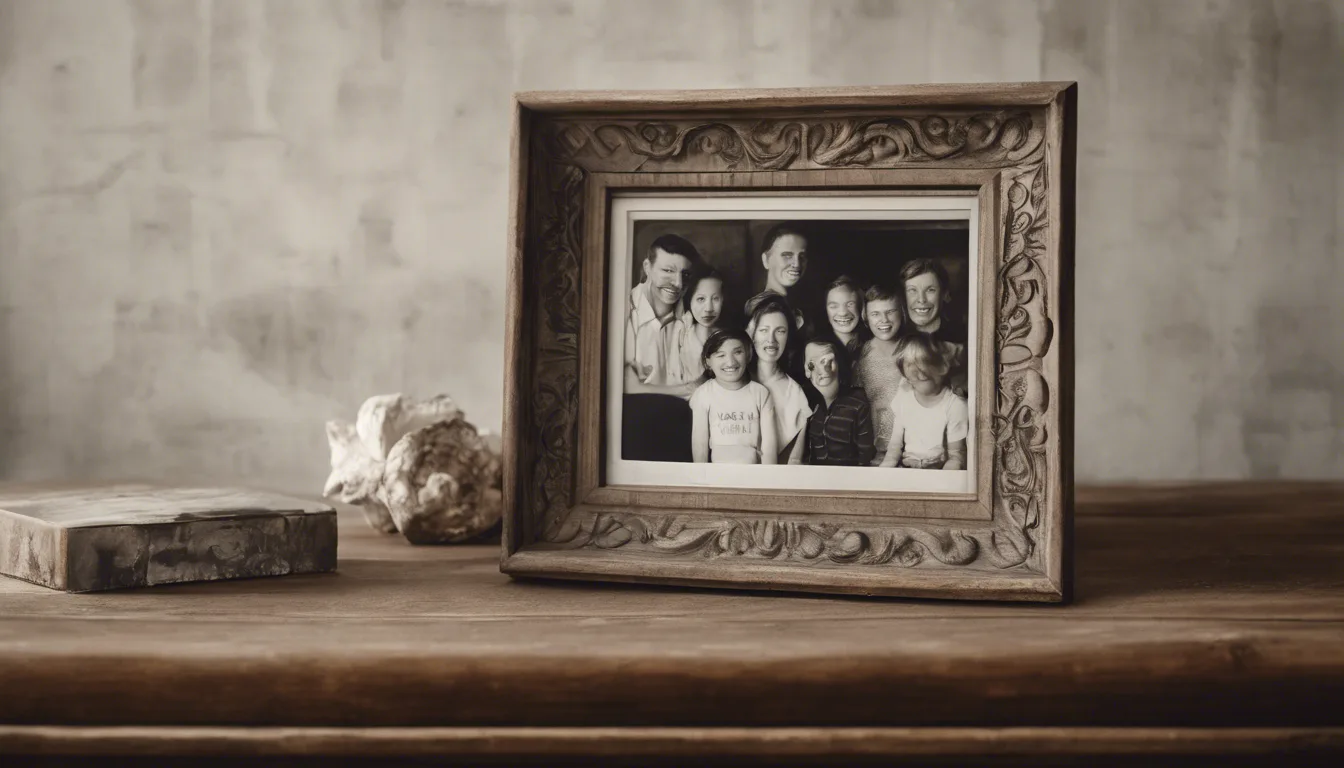9 Demographics of People Who Might Dream of Pictures Displaying Like a Video
Want a Personalized Dream Interpretation?
Curious about how people like you interpret this dream symbol? Explore personalized interpretations tailored to your demographic. Get personalized insights for free!
Get Free Interpretation Now →Table of Contents
1. Children and Adolescents
Children and adolescents are particularly prone to experiencing vivid and memorable dreams, often characterized by fantastical imagery and emotionally charged scenarios. These dreams can provide a glimpse into the complex inner workings of their minds, offering valuable insights into their fears, aspirations, and developmental journeys.
One striking feature of dreams among children and adolescents is the prevalence of pictorial imagery. These dreams unfold like live videos, with vibrant colors, dynamic movements, and engaging storylines. The pictures that appear in these dreams can be highly symbolic, embodying emotions, thoughts, and experiences that the dreamer may struggle to articulate consciously.
For instance, a child who is anxious about a school test might dream of being chased by a menacing monster, representing their fears of failure. Alternatively, an adolescent going through puberty might dream of soaring through the sky like a bird, symbolizing their newfound feelings of freedom and independence.
By interpreting the symbolism in these pictorial dreams, parents, educators, and therapists can gain a deeper understanding of the emotional and cognitive development of children and adolescents. Dreams can serve as a valuable tool for fostering communication, providing a safe space for individuals to explore their inner thoughts and feelings without judgment.
2. Pregnant Women
When a woman is pregnant, she undergoes a profound transformation, both physically and emotionally. This transformation often manifests itself in her dreams, which can become increasingly vivid and symbolic. One common type of dream symbol that pregnant women experience is the "picture displaying like a video."
These dreams are often characterized by a series of images that unfold like a movie or video. The images may be realistic or fantastical, and they may be related to the pregnancy itself or to other aspects of the woman's life.
Pregnant women who dream of pictures displaying like a video often find that the images are meaningful and insightful. They may provide clues about the woman's hopes and fears for the future, or they may reveal hidden aspects of her personality.
For example, a pregnant woman who dreams of a beautiful baby may be feeling excited and optimistic about the future. However, a woman who dreams of a sick or deformed baby may be feeling anxious or worried about the health of her unborn child.
Dream symbols can be a powerful tool for self-discovery and personal growth. By paying attention to the images in her dreams, a pregnant woman can gain a deeper understanding of herself and her pregnancy experience.
3. Stress and Anxiety Prone Individuals
For those prone to the clutches of stress and anxiety, dreams often transform into vivid, moving pictures, a captivating display that resembles a video unfolding before their eyes. These dream videos serve as a window into the subconscious, revealing hidden fears, unresolved conflicts, and the flickering shadows of past experiences.

These individuals may find themselves immersed in dreamscapes that mirror their waking anxieties. The relentless weight of stress can manifest as towering obstacles, suffocating environments, or relentless pursuers. The video-like quality of these dreams heightens their impact, creating a visceral experience that lingers long after waking.
The subconscious seeks to release the tension accumulated in daily life through these dream videos. It uses imagery and symbolism to represent inner turmoil, offering a distorted reflection of the waking world. Deciphering the intricate symbolism of these dreams can provide valuable insights into the underlying causes of stress and anxiety.
In one particularly vivid example, a young woman plagued by work-related anxiety might dream of an endless staircase, each step a daunting challenge. The video-like nature of the dream allows her to feel the strain in her muscles, the beads of sweat on her brow, and the suffocating weight of her anxieties.
For others, anxiety may trigger dreams of being lost in a vast, unfamiliar landscape. The absence of familiar landmarks and the overwhelming sense of isolation mirror the disorientation and insecurity they feel in waking life.
The dream videos experienced by stress and anxiety prone individuals are not mere illusions but rather a window into their inner selves. By embracing the symbolism and unraveling the hidden meanings, they can gain a deeper understanding of their fears, anxieties, and the path towards healing.
4. Creative and Artistic Individuals
For creative minds, dreams often serve as a vibrant canvas where imagination takes flight. These individuals may experience vivid and memorable dreams that resemble moving pictures, filled with rich imagery and symbolism.
The symbolism in these dreams can provide valuable insights into the creative process and the inner workings of these individuals. Creative people often dream of images that represent their current projects, upcoming performances, or artistic visions. These dreams can offer inspiration and fuel their creativity.
Moreover, symbols in dreams can reveal emotional states, repressed thoughts, and hidden desires. For artists, dreams may provide a safe space to explore complex emotions and find inspiration for their work.
For example, a painter might dream of a vibrant palette of colors, representing their passion for their craft. A musician might hear a symphony of melodies in their sleep, hinting at the musical ideas swirling in their mind.
Understanding the symbolism in their dreams can empower creative individuals to tap into their subconscious and enhance their artistic expression. By embracing the moving pictures of their dreams, they can unlock a wealth of inspiration and unlock the full potential of their imagination.
5. Trauma Survivors
For individuals who have experienced trauma, dreams often become a vivid tapestry of emotions, memories, and symbols. These dreams can be both hauntingly familiar and profoundly enigmatic, displaying a surreal realm where the past and present intertwine.
One of the most striking characteristics of trauma-related dreams is their vivid pictorial quality. They often resemble short videos, unfolding with evocative clarity and detail. The images that emerge may be explicit representations of traumatic events or fragmented glimpses of deeper emotional wounds.
In these dreams, the dreamer becomes an observer of their own experience, detached from the immediate physical pain while still deeply affected by its psychological impact. The dream world provides a safe space for them to confront and process their trauma in a controlled and indirect manner.
By examining the dream symbols that trauma survivors experience, therapists and researchers gain valuable insights into their patients' internal struggles. These images offer a unique window into the subconscious mind, revealing hidden fears, unresolved conflicts, and potential paths to healing.
6. Substance Users
Substance users may experience vivid and emotionally charged dreams, often characterized by intense imagery that unfolds like a video. These dream symbols can provide valuable insights into the user's inner struggles, underlying emotions, and potential areas for healing.
Common dream symbols for substance users include:
- Animals: Animals can represent the user's instincts, desires, and fears.
- Objects: Objects such as needles, pills, or money can symbolize the user's relationship with their substance of choice.
- Places: Buildings, caves, or forests can represent the user's current state of mind or their journey towards recovery.
- People: Familiar people, strangers, or archetypes can represent different aspects of the user's personality or relationships.
The vividness and emotional intensity of these dream symbols can be overwhelming for substance users, but they also provide a unique opportunity for self-exploration and growth. By working with a therapist or support group, users can learn to decipher the meanings of their dreams and use them as a tool for understanding their addiction and moving towards recovery.
7. Elderly Population
Dream Symbols: A Window into the Subconscious for the Elderly
As we age, our dreams often become more vivid and symbolic. This is because the elderly have a wealth of life experience to draw from, which can make their dreams more complex and meaningful.
One common type of dream symbol for the elderly is pictures that display like a video. These dreams can be seen as a way for the subconscious mind to process memories and emotions.
For example, an elderly person who is grieving the loss of a loved one may dream of a video of that person. This dream may be a way for the subconscious mind to help the person come to terms with their loss.
Alternatively, an elderly person who is feeling anxious about the future may dream of a video of themselves in a difficult situation. This dream may be a way for the subconscious mind to help the person prepare for potential challenges.
Dream symbols can be a powerful tool for understanding the subconscious mind. By paying attention to the dreams we have, we can gain insights into our thoughts, feelings, and motivations. This can be especially helpful for the elderly, who may be experiencing significant life changes and transitions.
8. Medically Ill Individuals
For those grappling with illness, dreams can take on a vivid and profound significance. Medically ill individuals often experience dreams that resemble moving pictures, portraying a rich tapestry of emotions, fears, and aspirations.
These visual manifestations can provide valuable insights into their inner world. Chronic pain, for instance, may be depicted as a relentless demon, while hope flickers like a candle in the darkest corners of their minds. The dream theater becomes a sanctuary where they can confront their vulnerabilities and explore hidden depths of their psyche.
By deciphering the symbolism within these moving images, healthcare providers can gain a deeper understanding of their patients' experiences. The recurring themes, colors, and characters that populate their dreams can serve as a guide to their emotional state, motivations, and coping mechanisms.
Like a puzzle waiting to be solved, dreams in medically ill individuals offer a unique window into their minds, providing a glimpse of their hopes, fears, and the resilience that sustains them amidst adversity.
9. Spiritual or Religious Individuals
Dreams for spiritual or religious individuals often hold profound symbolism, representing divine messages or guidance. These dreams may manifest as vivid, moving images, akin to watching a captivating video.
For instance, dreams of water can symbolize purification, rebirth, or a deep emotional connection. Water bodies such as rivers or oceans may suggest a journey or the flow of life.
Animal symbolism can also carry spiritual significance. A white dove, for example, may represent peace or the Holy Spirit. Alternatively, a serpent might evoke transformation or temptation.
Spiritual leaders often interpret dreams as revelations from the divine. They may search for patterns or connections to their beliefs and practices.
If you are spiritually inclined and experience dreams with moving images, consider exploring their deeper meanings. Embrace the messages they may convey and seek guidance from trusted spiritual sources.
Back to interpretation of pictures displaying like a video

